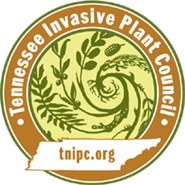Leucanthemum vulgare Lam.
Leucanthemum vulgare Lam.Ox-eye Daisy
| Category |
|---|
| Forb/Herb |

Description
Height:
Oxeye Daisy grows 1-3 ft. (0.3-1 m) tall.Stem
Stems are smooth or inconspicuously hairy. A single plant produces 1-40 flowering stems (one flower per stem), which are seldom branched.Leaves
Leaves are mostly basal, 1-4 inches (2.5-10 cm) long, petiolate, spoon-shaped, and toothed or lobed. Few stem leaves decrease in size closer to the apex.Flowers
Flowering occurs all summer, when daisy-like flower heads develop with white-petaled ray flowers surrounding yellow disc flowers.Fruit
Each flower head can produce up to 200 flat seeds that are 0.08 inch (2 mm) long and ribbed.Images
Photo: Richard Old, XID Services, Inc., Bugwood.orgMore images of Leucanthemum vulgare
Life History
Oxeye Daisy, also called Field Daisy, Marguerite, or Moon Daisy, is a perennial herbaceous plant that grows to 3 feet (1 m) tall and is a member of the Asteraceae (Aster) family. Ox-eye Daisy spreads through abundant seed production and vegetatively by rooting underground stems or rhizomes. Seeds have no special adaptations to aid dispersal, but are small and fall to the ground up to 6 feet (2 m) from the parent plant. Flowering occurs throughout the summer. While not considered poisonous to cows, Oxeye Daisy does impart a disagreeable taste to their milk.Origin and Distribution
Oxeye Daisy is native to Europe and was introduced into the United States as an ornamental in the 1800s. The plants have been shown to carry several crop diseases.Other States Where Invasive: AR, AZ, CA, CO, CT, DC, DE, FL, GA, HI, IA, ID, IL, IN, KS, KY, LA, MA, ME, MI, MN, MO, MT, NC, ND, NE, NH, NJ, NM, NV, NY, OH, OK,OR, PA, RI, SC, SD, TN, UT, VA, VT, WA, WI, WV, WY
Federal or State Listed as Noxious Weed, Prohibited, Invasive, or Banned: CO, MT, OH, WA, WY
Sources
Assorted authors. State noxious weed lists for 46 states. State agriculture or natural resource departments.Haragan, P.D. 1991. Weeds of Kentucky and Adjacent States: A Field Guide. The University Press of Kentucky. Lexington, Kentucky.
Southeast Exotic Pest Plant Council. 1996. Invasive exotic pest plants in Tennessee (October 1999). Research Committee of the Tennessee Exotic Pest Plant Council.
